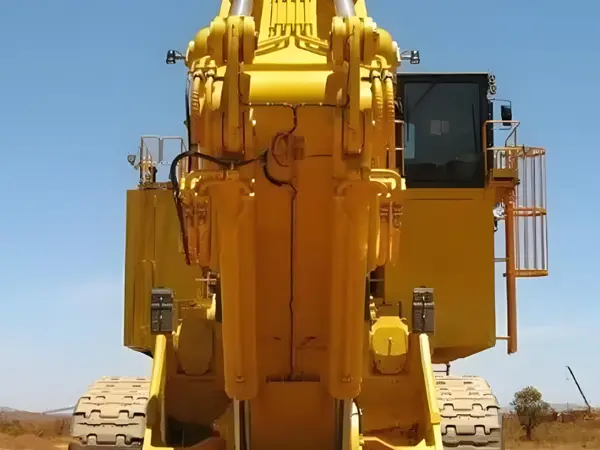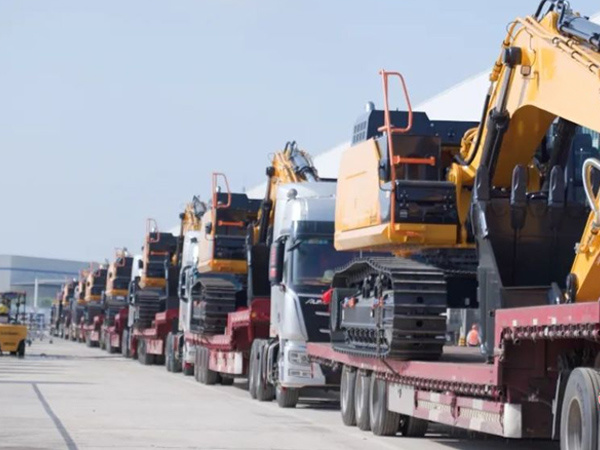Adapting Crawler Hydraulic Excavators for Specialized Tasks: Enhancing Versatility in the Construction Industry
Release time:
2025-04-26
Adapting Crawler Hydraulic Excavators for Specialized Tasks Table of Contents 1. Introduction to Crawler Hydraulic Excavators 2. Understanding Crawler Hydraulic Excavators 2.1 Key Components of Crawler Hydraulic Excavators 2.2 Working Principle of Crawler Hydraulic Excavators 3. The Importance of Adaptability in Excavators 4. Specialized T
Adapting Crawler Hydraulic Excavators for Specialized Tasks
Table of Contents
- 1. Introduction to Crawler Hydraulic Excavators
- 2. Understanding Crawler Hydraulic Excavators
- 2.1 Key Components of Crawler Hydraulic Excavators
- 2.2 Working Principle of Crawler Hydraulic Excavators
- 3. The Importance of Adaptability in Excavators
- 4. Specialized Tasks for Crawler Hydraulic Excavators
- 4.1 Demolition Work
- 4.2 Earthworks and Grading
- 4.3 Landscaping and Site Preparation
- 4.4 Mining and Quarrying
- 5. Adaptation Techniques for Specialized Tasks
- 6. Best Practices for Operating Adapted Excavators
- 7. Case Studies: Successful Adaptations in the Field
- 8. Conclusion
- 9. Frequently Asked Questions (FAQs)
1. Introduction to Crawler Hydraulic Excavators
Crawler hydraulic excavators are indispensable machines in the construction and engineering sectors. Their versatility allows them to perform a wide range of tasks, from excavation to demolition. However, to maximize their potential, adapting these machines for specialized tasks is crucial. This article delves deeper into how to effectively modify crawler hydraulic excavators for various applications, enhancing their capability and performance.
2. Understanding Crawler Hydraulic Excavators
2.1 Key Components of Crawler Hydraulic Excavators
Crawler hydraulic excavators consist of several essential components, including:
- **Crawler Tracks**: Provide stability and mobility on various terrains, allowing the excavator to traverse challenging environments.
- **Boom**: The long arm that extends from the body, essential for reaching and maneuvering.
- **Stick**: Connects the boom to the bucket and allows for precise digging.
- **Bucket**: The primary tool for excavation, available in various forms depending on the task.
2.2 Working Principle of Crawler Hydraulic Excavators
The operation of crawler hydraulic excavators relies on hydraulic systems that convert fluid power into mechanical force. By controlling hydraulic fluid flow, operators can articulate the boom, stick, and bucket, enabling precise movements for excavation and other tasks.
3. The Importance of Adaptability in Excavators
In an ever-evolving construction landscape, adaptability is key. Specialized tasks require specific functionalities that standard excavators may not provide. By adapting crawler hydraulic excavators, companies can enhance productivity, reduce downtime, and ensure that projects are completed efficiently and effectively.
4. Specialized Tasks for Crawler Hydraulic Excavators
Crawler hydraulic excavators can be adapted for numerous specialized tasks, each requiring unique capabilities.
4.1 Demolition Work
In demolition projects, excavators equipped with powerful attachments can efficiently dismantle structures. Specialized tools like hydraulic shears or grapples can be fitted to enhance their capability in breaking down concrete or steel.
4.2 Earthworks and Grading
For earthmoving tasks, adapting excavators with grading attachments ensures smooth leveling of surfaces. This adaptation is crucial in preparing sites for construction, especially in landscaping or road construction projects.
4.3 Landscaping and Site Preparation
When it comes to landscaping, excavators can be adapted with attachments like rakes or augers. These tools help in soil preparation, digging holes for planting, and moving materials efficiently across the site.
4.4 Mining and Quarrying
Adaptations for mining applications often include larger buckets or specialized digging tools. These modifications enable the excavators to handle tougher materials and operate more effectively in mining environments.
5. Adaptation Techniques for Specialized Tasks
The success of adapting crawler hydraulic excavators lies in understanding the specific requirements of each task.
5.1 Innovative Attachments
Various attachments can be utilized to expand the capabilities of excavators. Examples include:
- **Hydraulic Breakers**: Ideal for breaking rock or concrete.
- **Tilt Buckets**: Allow for more precise grading and contouring.
- **Augers**: Perfect for drilling holes in the ground for fencing or tree planting.
5.2 Upgrades for Enhanced Performance
Upgrading components like the hydraulic system, engine, or tracks can significantly improve an excavator's performance. Enhanced hydraulic pumps can provide greater lifting capacity, while upgrading to more durable tracks can extend the machine’s lifespan.
6. Best Practices for Operating Adapted Excavators
To ensure efficient operation of adapted excavators, consider implementing the following best practices:
- Regular Training: Operators should receive continuous training on the latest techniques and safety measures.
- Maintenance: Routine checks and maintenance are vital to ensure that all adaptations function correctly.
- Safety Protocols: Always adhere to safety guidelines to protect operators and nearby workers.
7. Case Studies: Successful Adaptations in the Field
Several companies have successfully adapted crawler hydraulic excavators for specialized tasks, leading to remarkable project efficiencies. For example, a construction firm utilized a hydraulic breaker attachment for a significant demolition project, reducing the time required for dismantling structures by nearly 30%.
8. Conclusion
Adapting crawler hydraulic excavators for specialized tasks is not just beneficial; it's essential for maximizing productivity in the construction and engineering sectors. By investing in innovative attachments and upgrades, companies can enhance the versatility of their excavators, enabling them to tackle a wider variety of projects effectively.
9. Frequently Asked Questions (FAQs)
What types of tasks can crawler hydraulic excavators perform?
Crawler hydraulic excavators are versatile machines capable of performing tasks like excavation, grading, demolition, landscaping, and mining.
How do you adapt a crawler hydraulic excavator?
Adaptation can be achieved through the addition of specialized attachments, upgrades to existing components, and adjustments to hydraulic systems.
What are the benefits of using attachments on excavators?
Attachments enhance the functionality of excavators, allowing them to perform specific tasks more efficiently and effectively.
How often should I maintain my adapted excavator?
Regular maintenance should be performed as per the manufacturer’s recommendations, typically every 250 hours of operation or every three months, whichever comes first.
Can I operate an excavator with specialized attachments in all conditions?
While many adaptations increase versatility, it's essential to consider the specific environment and conditions when operating an excavator to ensure safety and efficiency.





